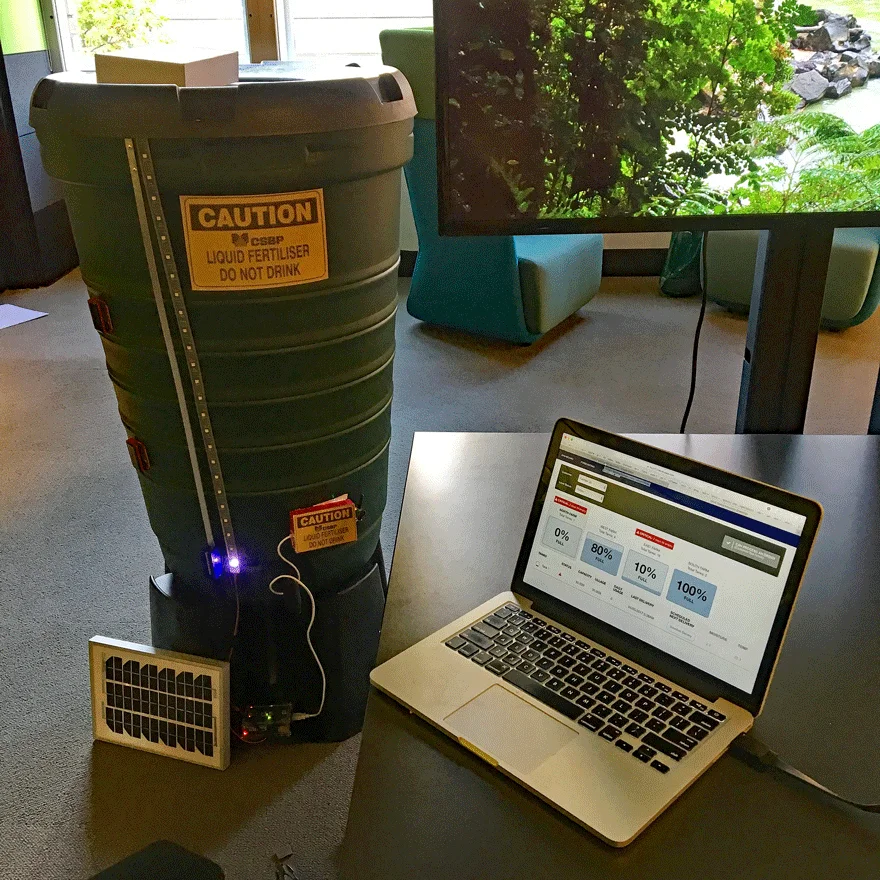
One week Innovation Challenge at Telstra
I had the opportunity to participate in a one-week innovation challenge at Telstra, focusing on IoT (Internet of Things) solutions. Our team at DiUS took on the task of creating a cost-effective sensor solution using Telstra's M2M network and cloud services. My role? Bringing the front-end to life! It was a whirlwind of creativity and coding, and I had an absolute blast building the user interface and interactions for our innovative sensor technology.
To monitor the storage tanks, we placed sensors on their exteriors. These sensors cleverly determined the fill level of each tank by measuring the temperature variations along the tank's surface. My contribution was building a user-friendly display that showed the levels of multiple tanks simultaneously. This was especially crucial for farmers with numerous tanks spread across their property, as it allowed them to efficiently track their stock and ensure that deliveries were only dispatched when necessary, optimizing resources and reducing unnecessary trips.
